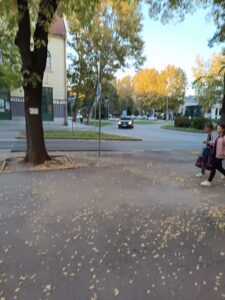Repair and restoration of historic buildings in Subotica
Subotica, a city located in northern Serbia, is renowned for its rich architectural heritage and vibrant cultural history. The city boasts a unique blend of styles, including Art Nouveau, Baroque, and Neo-Gothic, which reflect the diverse influences of various cultures over the centuries. As these historic buildings age, the need for repair and restoration becomes paramount to preserve their integrity and significance. This article explores the ongoing efforts and challenges associated with the repair and restoration of historic buildings in Subotica.
Historical Significance of Subotica’s Architecture
Subotica’s architectural landscape is a testament to its historical significance as a cultural crossroads in Europe. The city flourished in the late 19th and early 20th centuries, attracting architects and artisans from various backgrounds. Notable structures, such as the City Hall, the Synagogue, and the Raichle Palace, showcase intricate designs and craftsmanship that are emblematic of the Art Nouveau movement. These buildings not only serve as landmarks but also as symbols of the city’s identity and heritage.
The historical significance of these structures extends beyond their aesthetic appeal; they embody the stories and experiences of the communities that have inhabited Subotica. As such, their preservation is crucial for maintaining the cultural memory of the city. The architectural diversity found in Subotica is a reflection of its multicultural past, making the repair and restoration of these buildings an essential endeavor for both local residents and visitors.
Efforts to preserve this architectural heritage have gained momentum in recent years, driven by both governmental and non-governmental organizations. These initiatives aim to raise awareness about the importance of historic preservation and to secure funding for restoration projects. However, the challenges of balancing modern needs with the preservation of historical integrity remain a significant concern for stakeholders involved in these efforts.
Challenges in Repair and Restoration
The repair and restoration of historic buildings in Subotica face numerous challenges, chief among them being the availability of funding. Many restoration projects rely on grants, donations, and government support, which can be inconsistent and insufficient. This financial uncertainty often leads to delays in restoration efforts, leaving some buildings in a state of disrepair. Additionally, the costs associated with using traditional materials and techniques can be prohibitive, further complicating the restoration process.
Another challenge is the need for skilled artisans and craftsmen who are trained in traditional building methods. As modern construction techniques dominate the industry, the knowledge and skills required for authentic restoration are becoming increasingly rare. This shortage can result in the use of inappropriate materials or methods that compromise the historical integrity of the buildings. Consequently, finding qualified professionals who can execute restoration projects to the highest standards is a pressing concern.
Moreover, the bureaucratic processes involved in securing permits and approvals for restoration work can be cumbersome. Navigating the regulatory landscape often requires extensive documentation and adherence to strict guidelines, which can slow down the progress of restoration projects. This complexity can deter potential investors and volunteers from participating in preservation efforts, further hindering the restoration of Subotica’s historic buildings.
Successful Restoration Projects
Despite the challenges, there have been notable successes in the repair and restoration of historic buildings in Subotica. One such project is the restoration of the City Hall, a stunning example of Art Nouveau architecture. After years of neglect, the building underwent a comprehensive restoration that included structural repairs, façade cleaning, and the reinstatement of original decorative elements. This project not only revitalized the building but also reinforced its status as a central landmark in the city.
Another significant restoration effort involved the Subotica Synagogue, one of the largest synagogues in Europe. Following a period of deterioration, a dedicated team of architects and historians worked to restore the synagogue to its former glory. The project focused on preserving the intricate stained glass windows and ornate interior, ensuring that the building remains a vital part of the community’s cultural and religious life. The successful completion of this project has inspired further initiatives aimed at preserving other historic sites in the city.
Community involvement has also played a crucial role in the success of restoration projects in Subotica. Local organizations and volunteers have come together to raise funds, organize events, and advocate for the preservation of historic buildings. This grassroots support has not only helped to secure resources for restoration efforts but has also fostered a sense of pride and ownership among residents regarding their city’s architectural heritage.
The repair and restoration of historic buildings in Subotica are essential for preserving the city’s unique architectural heritage and cultural identity. While challenges such as funding, skilled labor shortages, and bureaucratic hurdles persist, successful restoration projects demonstrate the potential for revitalizing these important structures. With continued community involvement and support, Subotica can ensure that its historic buildings remain a source of pride and inspiration for future generations. The ongoing efforts to restore and maintain these architectural treasures reflect a commitment to honoring the past while embracing the future.



